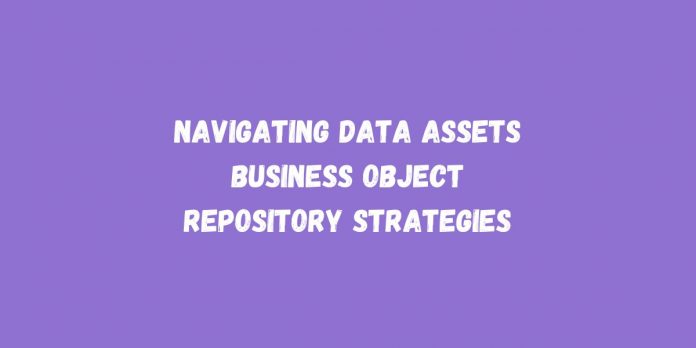In the contemporary business landscape, data has become a critical asset driving decision-making and innovation. Navigating data assets effectively is paramount to harnessing their full potential. This article explores the strategies and best practices for businesses to navigate their data assets successfully.
Understanding Business Object Repositories
Business Object Repositories serve as centralized platforms for managing and organizing data assets. Understanding their purpose and functionalities is crucial for businesses seeking efficient data management solutions. This section provides insights into the core components of business object repositories and their role in effective data asset navigation.
Challenges in Navigating Data Assets
Despite the importance of data assets, businesses often face challenges in managing them effectively. This section identifies common issues, such as data silos and inconsistent categorization, and explores the impact these challenges can have on overall business operations.
Strategies for Efficient Data Asset Navigation
To overcome challenges, businesses need robust strategies. Categorization, tagging, and metadata management are explored as effective techniques for organizing data assets and facilitating easy navigation. Implementing these strategies can significantly enhance the accessibility and usability of data.
Security and Compliance Considerations
As data holds sensitive information, ensuring the security of data repositories is crucial. This section emphasizes the importance of secure data storage and compliance with relevant regulations. Businesses must adopt measures to protect their data assets and maintain the trust of stakeholders.
Integration with Business Processes
For data asset strategies to be effective, they must align with organizational workflows. This section explores how integrating data repositories with business processes enhances operational efficiency. Seamless integration ensures that data is leveraged strategically throughout the entire business ecosystem.
Utilizing Advanced Technologies
The advent of Artificial Intelligence (AI) and Machine Learning (ML) has revolutionized data management. This section discusses how businesses can leverage these technologies to automate processes, identify patterns, and extract valuable insights from their data assets.
Case Studies
Real-world case studies provide practical insights into successful implementations of data asset navigation strategies. By examining the experiences of other businesses, readers can glean valuable lessons and apply them to their data management practices.
Training and Skill Development
Navigating data assets effectively requires a skilled workforce. This section emphasizes the importance of training teams on data asset navigation and advocates for building a data-centric culture within organizations.
Future Trends in Data Asset Navigation
The field of data management is dynamic, with ongoing advancements. This section explores emerging trends and technologies that are expected to shape the future of data asset navigation. Staying abreast of these developments is crucial for businesses seeking to maintain a competitive edge.
Selecting the Right Business Object Repository
Choosing the right business object repository is a critical decision. This section outlines criteria for selecting a repository that aligns with the unique needs of a business. It also guides evaluating available options in the market.
Measuring ROI in Data Asset Navigation
Measuring the return on investment (ROI) in data asset navigation is essential for assessing the effectiveness of strategies. This section discusses metrics businesses can use to quantify the impact of their data management efforts and demonstrate the value they bring to the organization.
Common Pitfalls to Avoid
Learning from the mistakes of others is crucial in the journey of data asset navigation. This section highlights common pitfalls and guides avoiding them to ensure a smooth and successful data management experience.
FAQ
How can businesses ensure the security of their data assets in repositories?
Exploring measures and best practices for safeguarding sensitive information.
What role does employee training play in effective data asset navigation?
Discussing the importance of a skilled workforce in successful data management.
Are there industry-specific considerations when selecting a business object repository?
Addressing the need for customization based on industry requirements.
How can businesses measure the success of their data asset navigation strategies?
Providing insights into metrics and indicators for assessing the effectiveness of data management efforts.
What are the potential risks associated with relying solely on automated data management processes?
Examining the balance between automation and human oversight in data asset navigation.
Conclusion
As businesses continue to amass vast amounts of data, navigating these assets strategically becomes a key differentiator. By implementing the outlined strategies and best practices, businesses can unlock the full potential of their data assets, driving innovation and informed decision-making.

